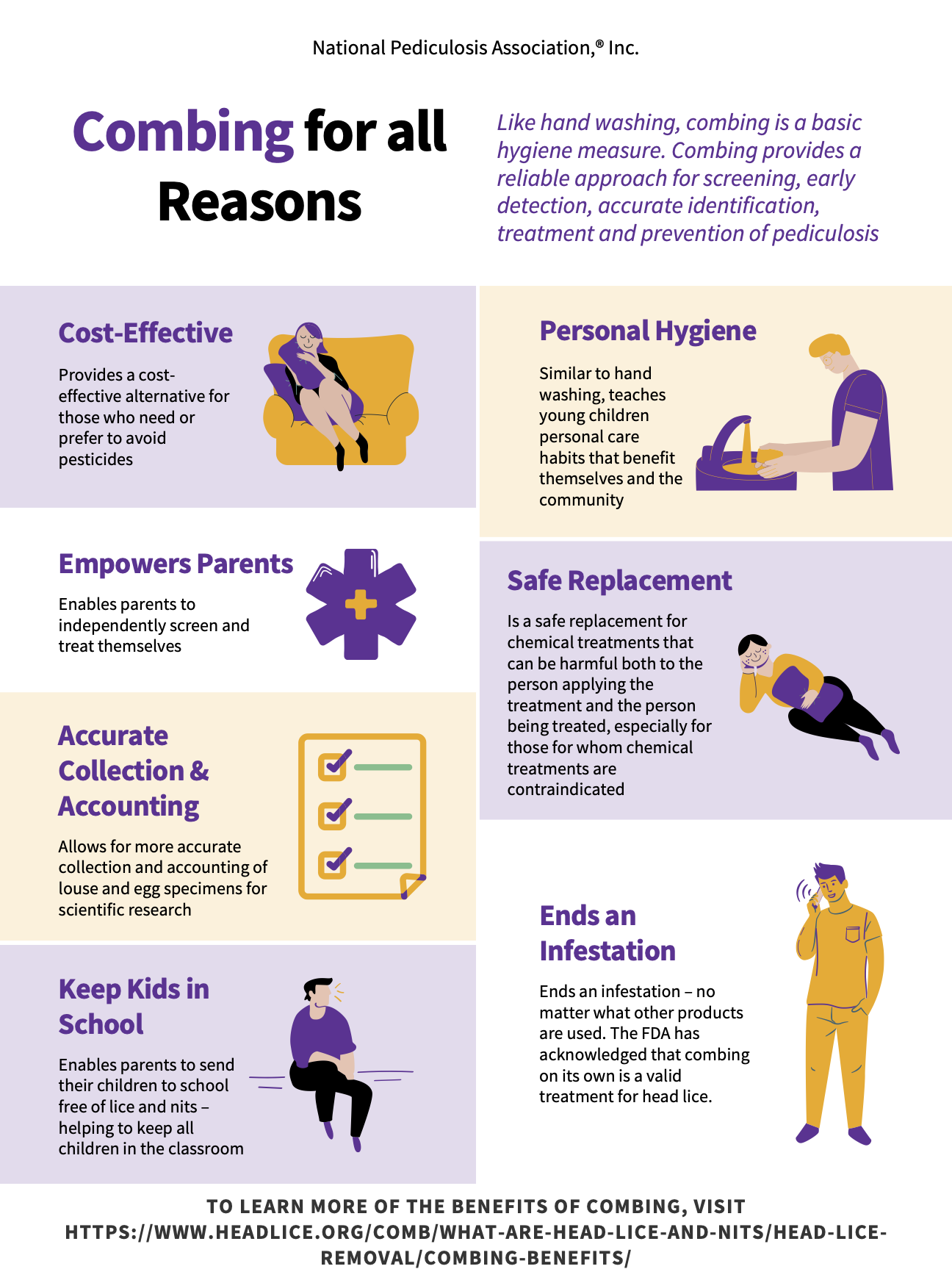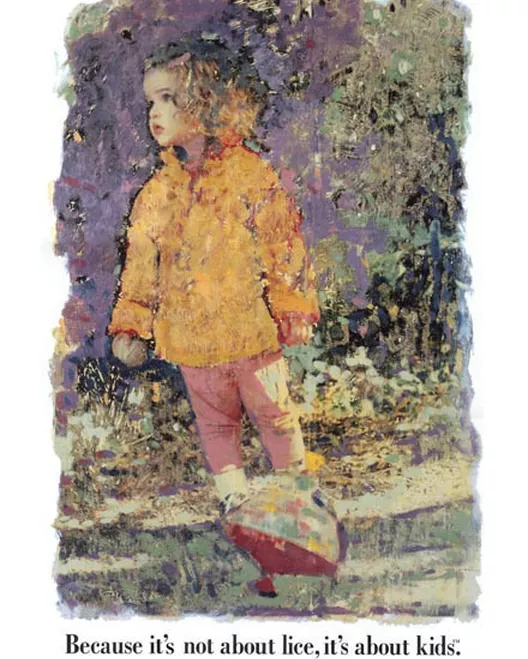Combing Benefits
The NPA offers a comprehensive approach to managing pediculosis in children based on early detection and thorough removal of lice and nits through combing. Combing requires the use of a quality lice and nit removal comb which in turn empowers parents to send their children to school free of lice and nits.

Screening with a Comb
- Allows for early detection and removal when there are fewer lice and nits present
- Allows parents to be first to know when their child is infested
- Empowers parents as non-health professionals to screen children privately and effectively at home, protecting children from worry and possible embarrassment
- Eliminates later confusion as to whether newly-found eggs were present previously or represent a new infestation
- Makes it unnecessary to determine whether removed lice and nits are alive or dead
- Provides an objective method to examine a child’s hair after an infestation to confirm its successful resolution before the child reenters the group setting
Detection/Identification with a Comb
- Allows any insects or eggs that are present to be collected by the comb for accurate identification
- Allows a person with an itchy scalp to avoid worry and unnecessary treatment by determining that it is not caused by pediculosis
- Is four times more efficient and twice as fast as direct visual examination in diagnosis of louse infestation1
Removal/Treatment with a Comb
- Ends an infestation – no matter what other products are used. The FDA has acknowledged that combing on its own is a valid treatment for head lice.2
- Eliminates the need for additional chemical treatments aimed at killing any lice that survive the first treatment as well as any new lice that will hatch from surviving viable eggs
- Is a critical part of good personal hygiene because it removes lice – human parasites that infest hair and scalps, feed on blood, defecate, breed, and glue their eggs to hair close to the scalp’s warmth in order to hatch new lice – and their eggs
Prevention through Combing
- Prevents continuing infestations caused by surviving nits hatching new lice
- Prevents pediculosis transmission to others
- Empowers parents to send their children to school free of lice and nits3
Safety through Combing
- Is a safe replacement for chemical treatments that can be harmful both to the person applying the treatment and the person being treated, especially for those for whom chemical treatments are contraindicated (women who are pregnant or nursing; anyone on medication or who has a preexisting medical condition such as allergies, asthma or cancer; children under two years of age; children who have been repeatedly exposed to chemical treatments for head lice)
- Avoids overexposing children to pesticides because there is no need for a second treatment. Parents can use too much of a chemical treatment or use it too often due to traditional pediculicides directing two treatments because they don’t kill the eggs.
Other Benefits of Combing
- Provides a cost-effective alternative for those who need or prefer to avoid pesticides
- Enables parents to independently screen and treat themselves
- Allows for more accurate collection and accounting of louse and egg specimens for scientific research
- Enables parents to send their children to school free of lice and nits – helping to keep all children in the classroom3
- Similar to hand washing, teaches young children personal care habits that benefit themselves and the community
- Is the basis of the lice removal (“nit picker”) service industry. (These professionals often use hair conditioners when they comb – parents can do this too.)
Some characteristics of pesticide treatments that parents should be aware of when making a pediculosis treatment choice:
- None of the chemical treatments on the market are 100% effective in killing head lice or their eggs, despite product packaging claims that may provide parents and others with a false sense of security that they will work and a sense of failure when they don’t
- Pesticides in treatment products are not necessarily completely washed away at the end of treatment; residual amounts can persist, be absorbed and accumulate in the human body
- Pesticide treatments can predispose a person to adverse reactions with even one chemical exposure
- Lindane and malathion are among the most neurotoxic pesticide ingredients contained in some prescription lice treatments. These pesticide treatments are also environmentally unfriendly because they can pollute both water systems and the atmosphere.4
- Overuse of pesticide treatments contributes to the development of lice that are resistant to treatment products (often referred to as “super lice”).
Notes
1 K Y Mumcuoglu, Pediatric Dermatology, Jan-Feb 2001
2 FDA petition response.
3 NPA’s No Nit Policy.
4 MVP Award.


